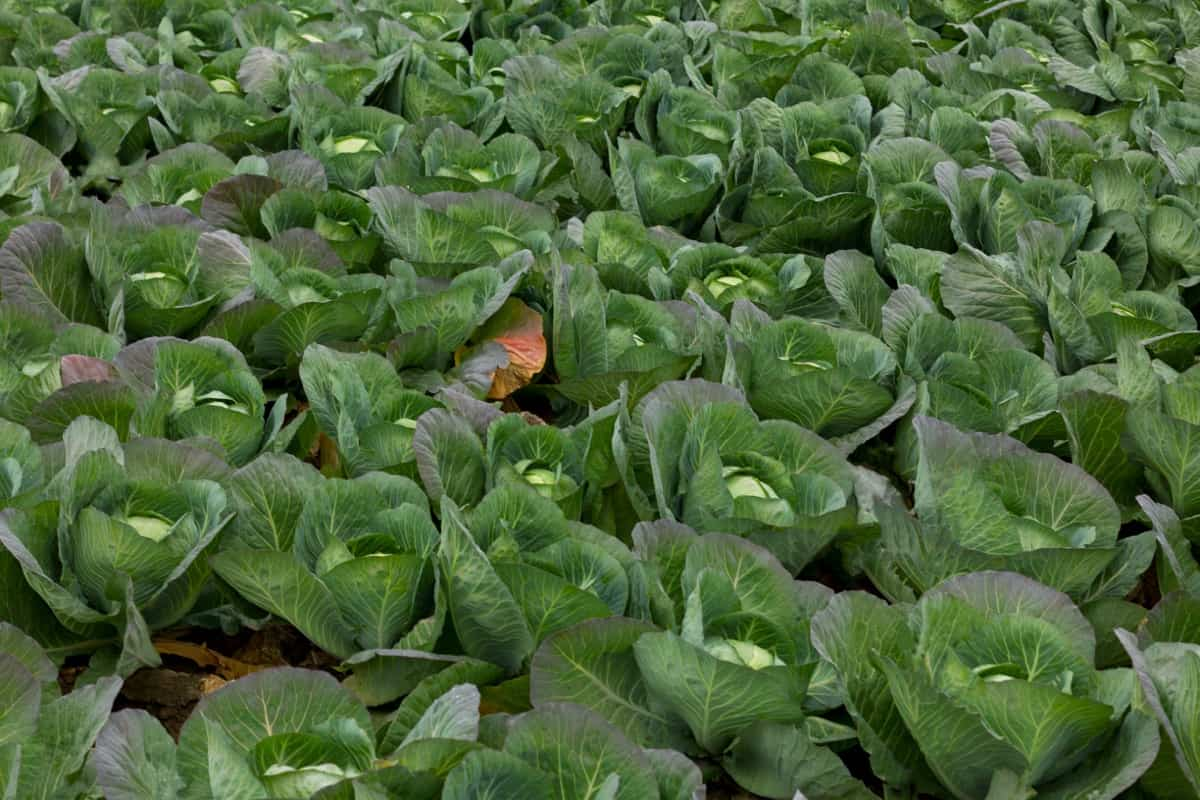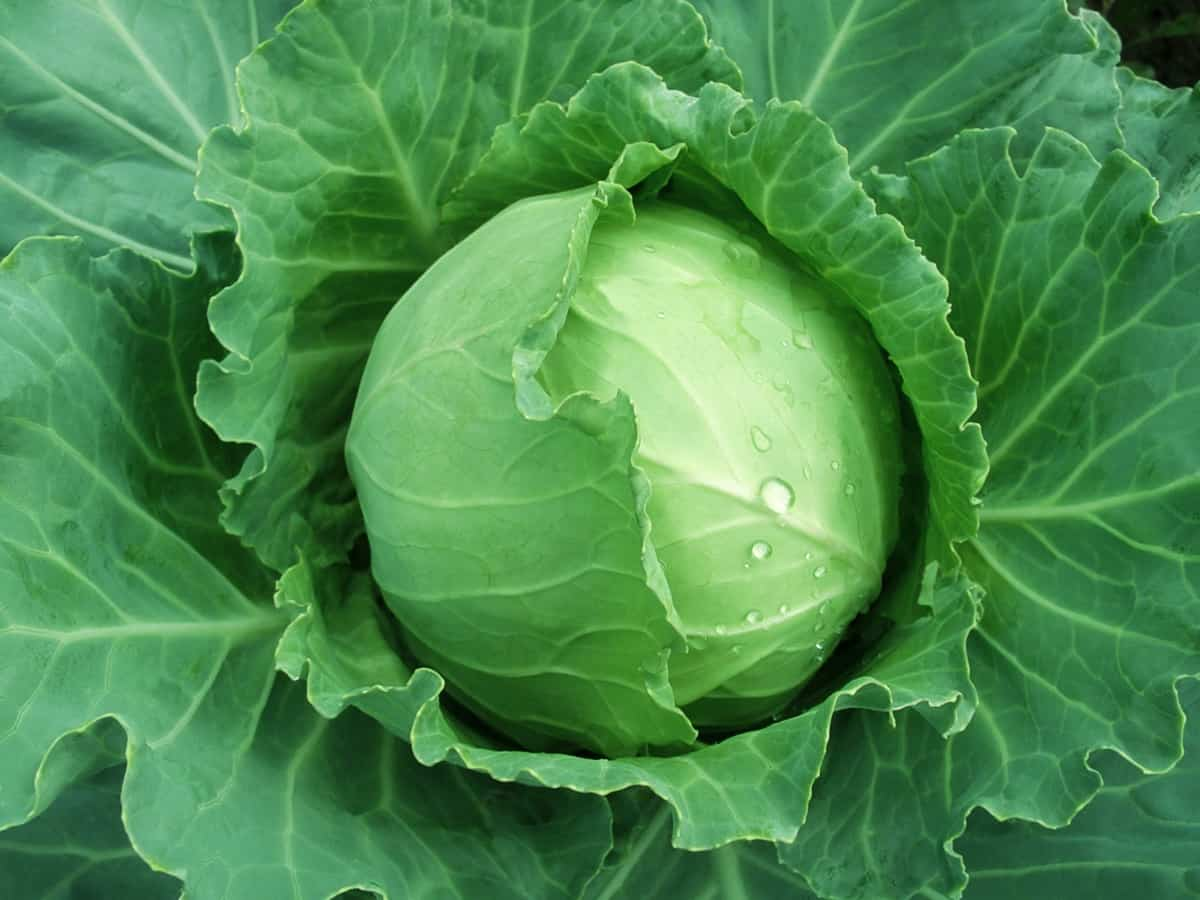Managing Cabbage clubroot can be challenging, but with the correct techniques and tools, minimizing its impact on your crops is possible. Remembering prevention is key when dealing with this disease is important. Make sure to rotate crops regularly and avoid planting brassicas in infected soil. By following management techniques and staying vigilant throughout the growing season, you can ensure healthy and hearty Cabbage crops year after year.

Cabbage Clubroot Management
Symptoms Of Cabbage Clubroot
Cabbage clubroot is a devastating disease that can cause significant damage to your vegetable garden. The first noticeable symptom of a Cabbage clubroot is wilting. Affected plants may appear healthy initially but will suddenly wilt during the day, even when there’s sufficient moisture in the soil.
This wilting usually becomes more pronounced as temperatures rise. Another common sign of clubroot infection is stunted growth. Cabbage plants suffering from this disease often display poor development, with leaves appearing smaller than usual and remaining close to the ground instead of growing upwards. When examining the roots of affected Cabbage plants, you’ll likely find swollen and distorted growths called galls.
Yellowing leaves are also a symptom that should not be ignored when dealing with potential cases of Cabbage clubroot. The yellowing typically starts from lower leaves before progressing throughout the plant. In severe cases, infected Cabbages might fail to form heads altogether or produce deformed ones if they do develop– another clear indication that your crop has fallen victim to this destructive disease.
Clubroot Of Cabbage Life Cycle
Clubroot is a disease affecting plants from the Brassicaceae family, such as Cabbage, broccoli, and cauliflower. The life cycle of clubroot begins when the pathogen’s spores in soil or debris come into contact with a susceptible host plant’s root. Once inside the root system, these spores germinate, producing zoospores that infect and colonize root hairs.
The infected cells enlarge and divide rapidly, forming galls or swellings on the roots’ surface. These galls interfere with water and nutrient uptake by reducing root conductance, leading to stunted growth and yellowing leaves. If left untreated, these galls will eventually rot away or break off from the main root system. This process releases millions of new fungal spores into the soil, continuing the cycle indefinitely.
Causes Of Club Root
Clubroot causes stunted growth and deformities in the roots of plants. One of the main causes of club root is contaminated soil. The pathogen can remain viable for several years in infected crop debris or contaminated soil particles carried from one field to another by wind, water runoff, animal droppings, or human activities such as tilling.
Another cause of club root is improper sanitation practices during planting season. Infected tools like shovels and equipment may spread spores from one area to another while moving from one field to another. Furthermore, some environmental factors favor club root development, such as acidic soils (pH below 7), high moisture levels (especially during warm weather), and cool temperatures that facilitate fungal reproduction.
Care For Plants with Clubroot
When it comes to caring for plants with clubroot, prevention is key. Once a garden has been infected with this disease, eradicating it can be difficult. The best approach is, therefore, to avoid introducing the pathogen into your garden in the first place. One way of doing this is by choosing resistant Cabbage varieties less susceptible to clubroot infection. Another effective technique involves crop rotation, where you avoid planting brassicas in soil that previously hosted members of the same family.
In case you missed it: How to Protect Cabbage from Slugs and Snails: Natural and Organic Control

Maintaining good soil health and fertility through regular applications of organic matter such as compost or manure is also important. This helps improve drainage and provides nutrients necessary for plant growth, strengthening their resistance against diseases like clubroot. In addition, practicing proper sanitation measures such as cleaning tools, boots, and other gardening equipment reduces the risk of spreading spores from one area to another while working on an infected plant.
Clubroot chemical control is one of the most effective ways to manage this disease in Cabbage plants. Several chemicals, including fungicides and soil fumigants, have been identified to help control clubroot. Fungicides are applied as a foliar spray or drench to infected plants. They work by killing the fungus that causes clubroot. However, overuse of fungicides can lead to resistance, so it’s important to follow label instructions carefully.
Soil fumigants are another option for controlling clubroot. These chemicals are applied before planting and work by sterilizing the soil. Careful use of these products is essential because they can also kill beneficial organisms in the soil. In addition to chemical controls, crop rotation can be an effective tool for managing clubroot. By rotating crops from year to year, you reduce the risk of infection building up in your soil. Chemical control is just one part of a comprehensive approach to managing Cabbage Clubroot.
Combining chemical treatments with other methods like crop rotation and good cultural practices is important for the best results. Taking care of plants affected by clubroot requires both patience and diligence. By implementing these preventive measures and giving your plants adequate care throughout their lifecycle, you may be able to limit the damage caused by this stubborn disease that affects many vegetable gardens worldwide.
How To Prevent Clubroot Disease?
To prevent clubroot diseases in your Cabbage plants, there are several measures you can take. Ensure the soil is well-drained and has a pH level of 7 or above. This helps create an unfavorable environment for the growth of clubroot spores. In addition to this, rotate your crops annually. Avoid planting Cabbages in the same area for at least three years, as this reduces the chances of infection from remaining spores in the soil.
You may also want to consider using raised beds or containers since these provide better drainage than traditional garden beds. It’s important to note that prevention is always better than cure when managing clubroot diseases. Therefore, purchase healthy seedlings from reputable sources and inspect them thoroughly before planting. Sanitize all gardening tools after use and avoid walking on wet soils, which could spread infections between plants.
In case you missed it: How to Grow Chinese Cabbage: A Step-By-Step Planting Guide

Conclusion
Cabbage clubroot is a serious disease that can cause severe damage to your garden. Managing a Cabbage clubroot can be challenging, but it is not impossible. Early detection and proper management techniques are crucial in preventing the spread of this disease. Following these tips, you can effectively manage clubroot in your Cabbage plants and ensure a healthy harvest.
Always practice good crop rotation, maintain optimal soil pH levels, and choose resistant varieties to prevent future infections. With these methods, you can enjoy a bountiful harvest of fresh and delicious Cabbage without any worries about clubroot.
- Feed Your Flock for Less: Top 10 Tips to Save on Chicken Feed
- Ultimate Guide to Ossabaw Island Hog: Breeding, Raising, Diet, and Care
- Hatching Answers: The Top 10 Reasons Your Chickens Aren’t Laying Eggs
- Eggs and Economics: Breaking Down the Cost of Raising Backyard Chickens
- Defend Your Greens: Proven Methods to Keep Iguanas Out of Your Garden
- Ultimate Guide to Cinnamon Queen Chicken: A Comprehensive Guide for Beginners
- Ultimate Guide to California Tan Chicken: Breeding, Raising, Diet, Egg-Production and Care
- Ultimate Guide to Marsh Daisy Chicken: Breeding, Raising, Diet, and Care
- 10 Types of Chicken Farming Businesses You Can Start for Profits